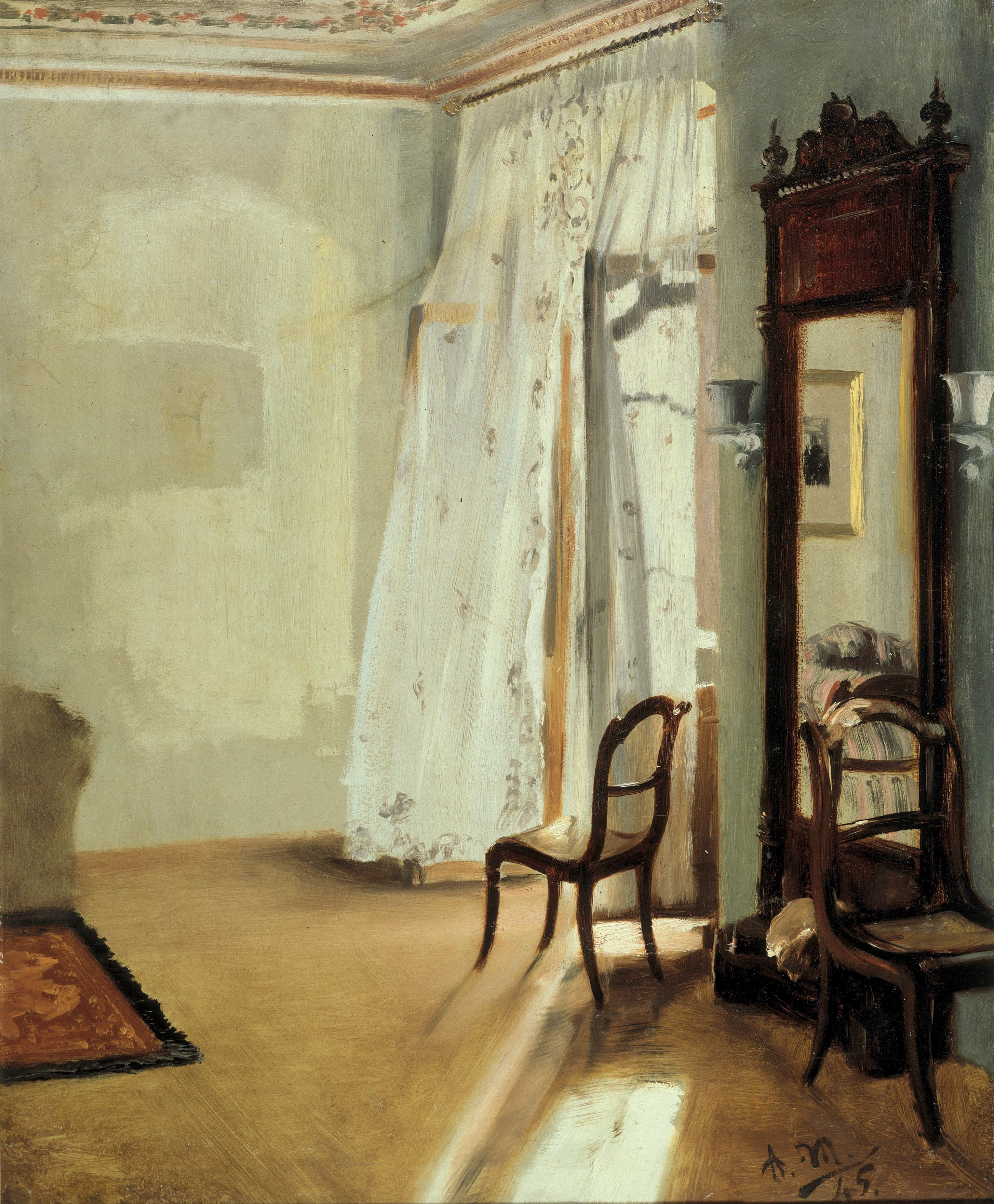Jag läser lite mer i Kirsty Bells både personliga och historiska bok om Berlin - Undercurrents. Hon nämner också den här målningen av Adolph Menzel, Balkongrummet från 1845.

Det visar sig att Menzel bodde nästan granne med Bell, fast med 170 års mellanrum, i en del av Berlin längs Landwehrkanal som är helt förändrad av bombningarna under Andra världskriget, även om vissa hus och byggnader står kvar.
On a spring day in 1845, exactly a century before the full moom rose to illuminate a devastated city, Adolph Menzel made a painting of his room. Pale spring light breathes through thin muslin curtains which frame the open window and billow gently into the room. The light lies in a bright shaft of reflection on the polished parquet floor in the foreground, and shimmers on the back of a mahogany chair, placed at an angle to the open window. A matching image reflected on an invisible diagonal plane. On the wall behind the chairs is an actual mirror, tall with a carved mahogany frame, reflecting a gold-framed pircture on the opposite wall, shown at another oblique angle. The motion in this painting is all diagnoal, and all of its action occurs on the right. On the left is just a spread of parquet floor, a corner of red carpet, and a bare expanse of wall. Hovering on this wall is an ambiguous patch of white. A painted void, as if unfinished.
Bell cyklar till Alte Nationalgaleri på Museuminsel för att titta på målningen:
In the Old National Gallery on the Museum Island, the guard directs me to the Menzel wing where I find the Balcony Room, a small painting prominently displayed opposute the room's entrance. It is full of ambiguity, less a painting of a room and more the light that floods in and the breeze that seems to animate it. The space within the walls, rather than the walls themselves. In fact, it seems to be about nothing. About doing nothing, and observing yourself doing nothing. The ambiguous mark on the wall is a flourish of self-reflexivity. That the work's central focus is this patch of paint suggests that paint is being employed literally – tautologically – to replicate its own material state.